Home > Horse Care > A horse owner’s guide to herbs
A horse owner’s guide to herbs
- November 10, 2025
- ⎯ Gulsah Kaya Karasu, DVM, with Christine Barakat
Herbal supplements for horses have gone from novel to mainstream in the last 40 years, just as they have for people.
Their appeal is undeniable. After all, herbs were our first medications. In ancient Greece, for example, willow bark—the source of salicylic acid, the base ingredient of aspirin—was used to relieve pain and fever. And all over the world a variety of plants—including comfrey, cayenne and mint—have long been known for their medicinal properties. Even in this age of modern pharmaceuticals, herbs are the basis for many products, while the plants themselves are still valued by many for their therapeutic effects.
Even if you’ve never fed your horse herbal supplements, you’re likely to encounter them at feed stores and on the internet, so it’s wise to learn a bit about them. To spare you the effort of sorting through the volumes of information available about herbs, we’ve pulled together some key facts about those most commonly fed to horses.
Defining the herb terms
To start, though, it’s important to define some terms. Broadly speaking, an herb is any plant-based product used for culinary, medicinal or cosmetic purposes. So, technically, your horse is on an herb-based diet: pasture grass, hay and other feedstuffs either are herbs or incorporate them. In just about any discussion of dietary supplements, however, the term “herb” refers to plants that contain bioactive compounds. These can have effects on any organism consuming them, or those from which extracts with desirable properties can be derived.
However they are fed, most herbs have cumulative, slow-acting effects on horses. But that doesn’t mean that herbal products can’t cause imbalances or overdoses. Nor is it wise to assume a product is safe because it’s labeled “herbal” or “natural.” Indeed, some herbs—such as St. John’s wort (Hypericum perforatum) and castor oil plants (Ricinus communis)—are toxic to horses but are safe for other livestock. Read the labels of herbal products, and follow the dosage instructions as carefully as you would those for any medication.
For horses who compete at sanctioned events, there’s one more consideration. Just because a product is natural and easy to get doesn’t mean it’s legal to use in the show ring. In fact, many organization rules not only ban specific medications and supplements, but also include a clause prohibiting any substance that could potentially alter a horse’s demeanor. So if you are feeding an herbal product with the intent to improve a horse’s attitude or performance, you’re in violation of such a clause. What’s more, some ingredients in an herbal calming product may be on a banned list even if the product itself isn’t, resulting in a positive test and/or disqualification.
With all that in mind, here’s a look at the plants most commonly used for equine herbal supplements
Devil’s Claw
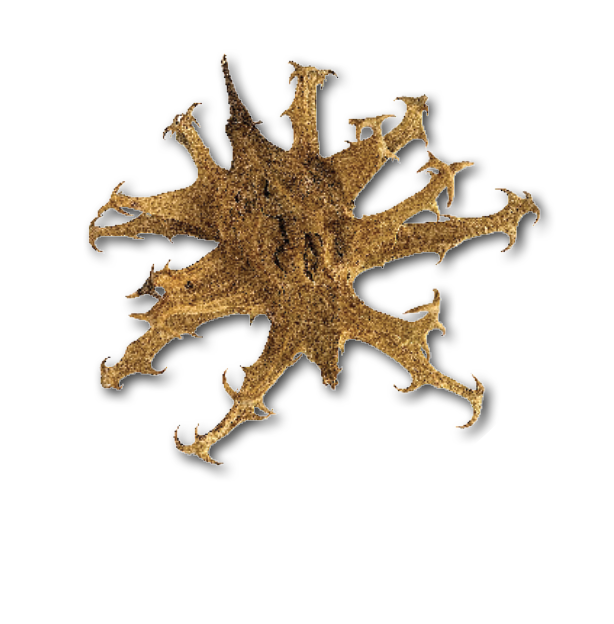
Background: Devil’s claw is native to the Kalahari region of southern Africa. Its botanical name, Harpagopythum, means “hook plant” in Greek, a reference to the peculiar appearance of the fruit, which is covered with small hook-like projections that attach to passing animals, which then spread its seeds. The roots and tubers of the plant have been harvested and used medicinally for centuries.
Purported benefits: Devil’s claw has high concentrations of a compound called harpagoside, which has anti-inflammatory properties. Clinical studies have shown that people who ingested devil’s claw root experienced the same pain reduction and improved joint mobility as those who received analgesic drug treatment. In equine supplements, devil’s claw is most commonly found in joint-support products. Efficacy research is still pending, but a 2018 pharmacokinetic study showed that the active ingredient entered the bloodstream of horses within 30 minutes of administration with no clinically detectable adverse side effects.
Caution: Devil’s claw is a bitter herb so it could increase gastric secretions and may not be suitable for a horse with a history of gastric ulcers.
Echinacea
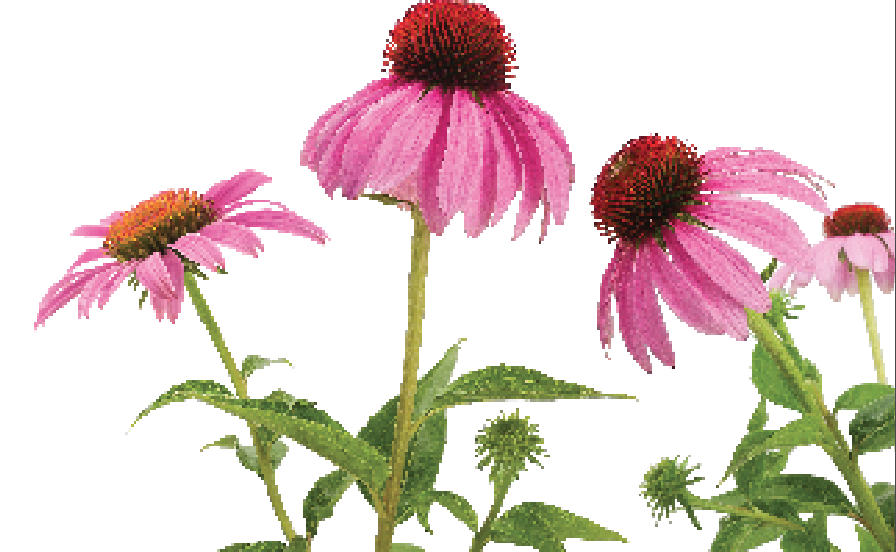
Background: Echinacea is the name of a group of flowering plants in the daisy family, native to North America. Echinacea extract used in supplements is typically derived from Echinacea purpurea, Echinacea angustifolia and Echinacea pallida, all commonly referred to as coneflowers
Purported benefits: The active components of the echinacea species include caffeic acid derivatives, polysaccharides and alkamides. Echinacea extract appears to stimulate immune cells in laboratory and animal studies. Some compounds found in echinacea also appear to reduce inflammation, relieve pain and kill bacteria and viruses in laboratory settings. Human studies have found that echinacea is not effective for preventing the common cold or treating respiratory infections, but it may shorten the duration of colds. A 2002 Canadian study showed that echinacea extract increased red blood cell and hemoglobin levels in healthy horses while also stimulating white blood cell function. The researchers speculate this could potentially enhance athletic performance.
Cautions: Some evidence exists that echinacea can alter the ways that some drugs are broken down by the liver in people. In addition, echinacea may trigger adverse reactions in people allergic to daisies, mums or ragweed. No equine-specific safety or dosing information is available.
Evening Primrose
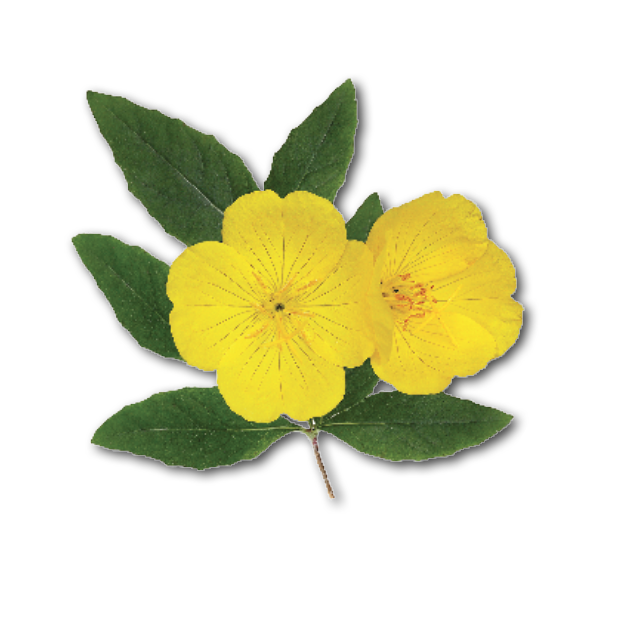
Background: Native to North America, evening primrose (Oenothera biennis) produces yellow flowers that bloom in the evening. The plants’ seeds are used to obtain evening primrose oil.
Purported benefits: Evening primrose oil contains unsaturated fatty acids, primarily linoleic, gammalinoleic, palmitic and oleic. All of these are considered the “healthy” dietary fats. Traditionally, primrose leaves were applied to minor wounds or eaten to ease digestive complaints or sore throats. Today, people use evening primrose oil supplements for eczema, rheumatoid arthritis, premenstrual syndrome and menopause symptoms. The fatty acids in primrose oil could, theoretically, benefit equine skin, coat and hooves. Anecdotally, horse owners report primrose oil helps treat sweet itch in horses, but no scientific studies have confirmed these observations. In laboratory studies, primrose oil has been shown to have anti-inflammatory effects. In 2014 researchers in the Czech Republic found evidence of antioxidant activity in racehorses given primrose oil.
Caution: Large doses of primrose oil have been associated with stomach upset, nausea and diarrhea in people. No dosing guidelines have been established for horses.
Garlic
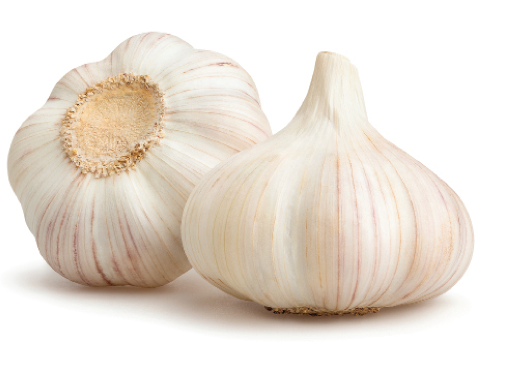
Background: A member of the allium (onion) family, garlic is one of the world’s oldest cultivated crops. Garlic can be found just about anywhere, but today 80 percent of the world’s supply is grown in China. Garlic’s distinctive odor comes from the sulfur compounds it contains.
Purported benefits: Garlic is one of the most widely used herbs in the horse industry. Laboratory studies show that alliin and allicin, com- pounds found in raw garlic, kill bacteria, reduce the number of platelets in the blood and slow clotting. Research has also shown that other garlic compounds called ajoenes can prevent blood clots. Garlic powder and garlic essential oils do not contain allicin or ajoene. In horses, garlic is most often used in products formulated to repel pests, such as flies, midges, mosquitoes and ticks. Because it is thought to be a natural antibiotic, garlic is sometimes given to horses with chronic respiratory conditions.
Caution: Garlic fed in large amounts can be harmful to horses, causing toxicity and Heinz body anemia, a condition resulting from oxidative damage to red blood cells. A 2005 study showed that horses will voluntarily consume enough garlic to trigger this condition. Some people claim that garlic is a “natural dewormer,” but there is no scientific evidence that it has antiparasitic properties. Giving a horse garlic instead of a proven anthelmintic product puts him at risk of internal parasites.
Ginseng
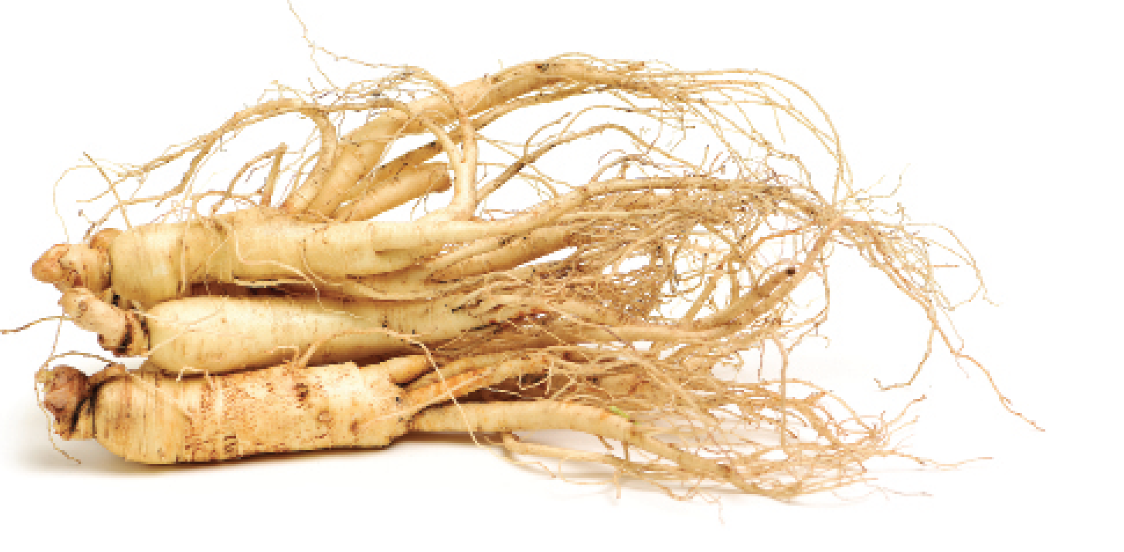
Background: Ginseng is the root of plants belonging to the Araliaceae family. Various species of ginseng are native to Asia and North America. American ginseng (Panax quinquefolius), Asian ginseng (Panax ginseng) and Siberian ginseng (Eleutherococcus senticosus) are the most commonly used in equine supplements.
Purported benefits: In laboratory testing, ginsenosides have been found to both stimulate and inhibit the central nervous system in humans and to stimulate the immune system of mice. In the horse industry, ginseng products are marketed as stress reducers and performance enhancers. Research in horses is scarce, but a 2007 study performed at the Equine Research Centre at the University of Guelph in Canada, showed that healthy horses given low-dose dietary gingseng supplementation had increased titer levels after vaccination against equine herpesvirus. This suggests the herb may be a useful adjunct to vaccination.
Caution: Very little is known about feeding ginseng to horses, so there is no recommended dosage or large-scale study of any potential side effects.
Ginger
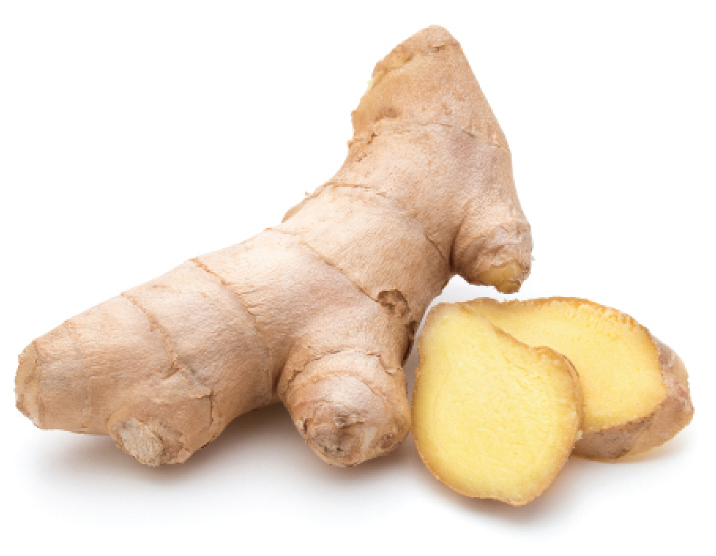
Background: Derived from the rhizome of the flowering plant Zingiber officinale, ginger is used widely in both cooking and traditional medicine. Ginger is in the taxonomic family of Zingiberaceae, which includes turmeric (Curcuma longa) and cardamom (Elettaria cardamomum). The plant originated in Southeast Asia and was likely cultivated there and transported throughout the Indo-Pacific. Ginger was also one of the first spices exported from Asia, arriving in Europe with the spice trade to be used by ancient Greeks and Romans.
Purported benefits: The active constituents in ginger are gingerols and shogaols. Clinical trials in humans indicate these compounds can reduce nausea and vomiting, possibly by increasing the flow of saliva and digestive juices. A 2009 study conducted at Rutgers University showed that ginger extract can reduce equine recovery times from peak fatigue to a post-exercise plateau. This effect may be beneficial for horses competing in strenuous sports such as racing or show jumping. However, the same researchers found an increase in pro-inflammatory proteins in the horses given ginger extract. They speculate that these may have contributed to inflammation of gastrointestinal tissues in the study horses.
Caution: There are no studies of safe or recommended dosages of ginger, and its caustic properties mean it might be unwise to feed it to horses with a history of gastric ulcers.
Rose hip
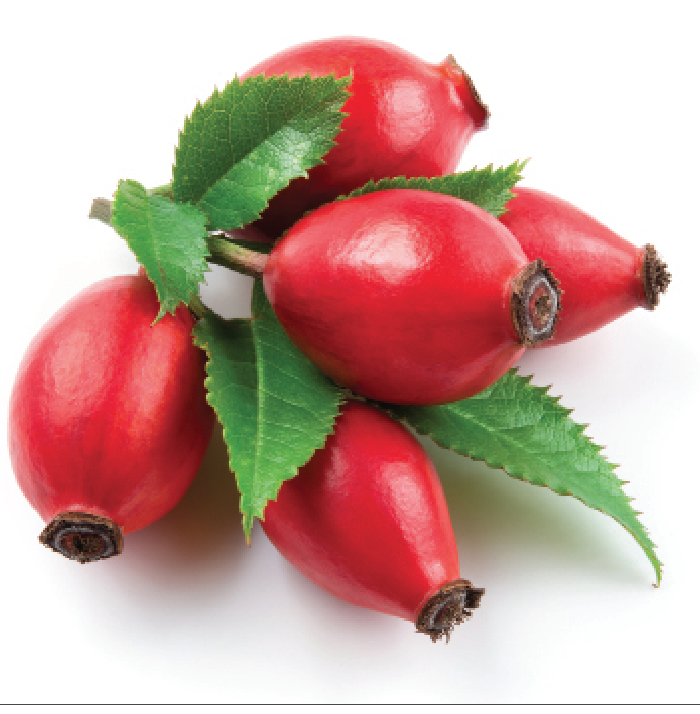
Background: Rose hips are the seed pods of roses (Rosa spp.)—the tiny fruit that stays behind after the blooms fade and petals fall. They resemble tiny, elongated apples and are often eaten by birds. Rose hips are widely used in teas and jams, and rose hip soup is popular in Sweden.
Purported benefits: Fresh rose hips are high in vitamin C. In fact, during World War II, the British government encouraged people to collect rose hips as a source of the vitamin to replace citrus fruits, which were impossible to get. During the drying process to make rose hip powder, much of the vitamin C is lost. However, and some “natural” rose hip powders are actually fortified with the vitamin. Horses do not generally need vitamin C supplementation because sufficient quantities are naturally produced by the equine liver. Nonetheless some people believe that supplementation may still be helpful. A 2012 study from Denmark found evidence of increased antioxidant activity in harness horses regularly receiving rose hips.
Caution: No dosing guidelines have been established for horses. Reported side effects in humans include nausea, heartburn and stomach cramps.
Valerian

Background: Valerian is derived from the root of the plants from the Valerianaceae family. Native to Europe and Asia, these tall, flowering plants have been naturalized in the United States. Valerian has been used for medicinal purposes since ancient Greek and Roman times. There are 250 species in the genus, but Valeriana officinalis is the one most often used in herbal supplements and teas.
Purported benefits: Valerian is marketed for people as a calming herb, helpful in reducing nervous- ness or insomnia. In laboratory experiments, valerian extract has prevented the breakdown of an important inhibitory neurotransmitter chemical in the nervous system. This could produce a calming effect, but clinical studies are inconclusive.
In the equine industry, valerian root extract is typically sold as a “calming” supplement. It is given to relieve nervousness, stress and fear without affecting performance. However, there are no scientific studies to back these claims.
Caution: Valerian is banned by many equestrian organizations, including the Fédération Equestre Internationale (FEI) and United States Equestrian Federation (USEF).
Yucca
Background: The yucca found in herbal supplements is derived from Yucca schidigera, an ornamental desert shrub with characteristic stalks of tall, white flowers. The herb is spelled with a double “c,” which can lead to confusion with “yuca,” the potato-like root of the non-flowering shrub commonly called cassava. That yuca is a dietary staple in many developing countries.
Purported benefits: Yucca extracts are thought to have anti-inflammatory effects. The plant contains saponins, chemicals that bind to fats and oils and have been shown to lower cholesterol in humans. It has been postulated that saponins may have anti-arthritic, antioxidant and antispasmodic properties. No reliable data verifies these claims in horses. However, a 2012 study from England did find that ammonia fumes were reduced in stables where horses were fed a yucca supplement.
Caution: There are no established dosing guidelines for yucca in horses.
Final thoughts
You may not consider yourself the “herbal” sort of horse owner, but chances are your feed room contains at least one plant-based product you give to your horse with the goal of improving his health. These products are both traditional and growing in popularity. The best way to use them is to learn about the ingredients, purported benefits and potential risks to ensure they fill an appropriate role in your horse care plan.
Reference: “Plant bioactives and extracts as feed additives in horse nutrition,” Journal of Equine Veterinary Science, June 2018





